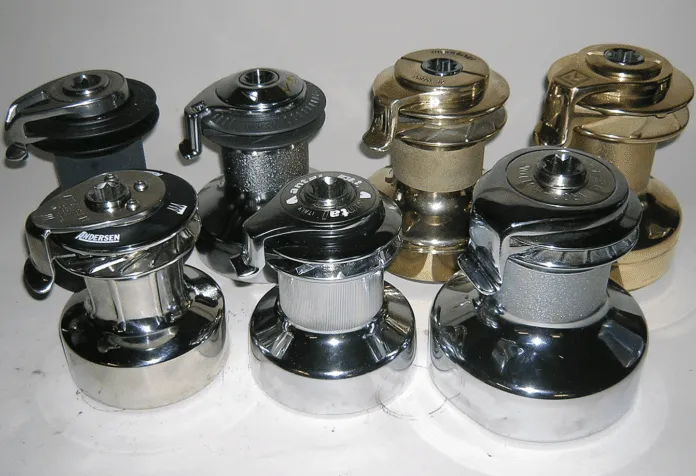But how many wraps do we need to keep enough pressure on the line tail to keep it firmly lodged it in jaws of the winch’s self-tailer? And how many do we need to make sure the rope won’t jerk free from the self-tailer? How would upgrading to slippery high strength fibers like Dyneema impact these answers? There’s an app for that—a formula, we mean.
THE CAPSTAN EQUATION
Used in this mode, the winch drum is a capstan—the axis around which other cords or fibers are wrapped. So, if we know the coefficient of friction between the capstan and the cord being wrapped around it, we can use the “capstan equation” for calculating the load on the tail after each wrap.
Load tension=(tail tension)x (2.72)^(angle in radians x coefficient of friction)
Note, however, that static friction is slightly greater than sliding or kinetic friction. For example, it takes slightly more effort to stop a moving line than to hold one still. For simplicity, we are addressing only static friction here.
DEALING WITH DYNEEMA
The table above gives a good picture of the impact of a fiber upgrade on holding ability on a capstan.
The coefficient of friction for polyester on an aluminum drum is about 0.20-0.22. For polyester on a wooden piling, the coefficent is about 0.4-0.42.
The coefficient of friction for Dyneema on an aluminum drum is about .085, so you can expect to use 2-3 times as many turns as you would using polyester. Most Dyneema covers (as opposed to single braid) typically include at least some polyester or Technora to increase friction, so its coefficient of friction will fall somewhere between that of polyester and Dyneema.
In light winds (200 pound sheet tension), just two turns on an aluminum drum with a polyester-cover rope will give 12 pounds of tail tension, just enough to hold the rope in the self-tailer jaws. In strong winds (2,000 pound sheet tension) four turns will result in 8 pounds of tail load, still just enough to keep the tail secured in the winch self-tailer jaws.
With only three turns on the drum, the tail tension will climb to 32 pounds and it might slip in the self-tailer. But in more moderate winds, three turns might be about right. In a blow, if the drum is smooth and your Dyneema-cover sheet is brand new, you might need five turns.
Pure Dyneena will be very hard to manage, which is why even Dyneema-covered ropes blend some polyester or Technora into the cover blend to increase friction. The composition can vary significantly, from 14 to 17-percent Technora. In jammers and winches, Polyester and Technora blends are also much less prone to overheating or “glazing” than pure Dyneema.
THE ROLE OF RADIUS
In theory, the radius of the drum is not a factor, but in practice, if the radius is less than about five rope diameters, internal rope friction adds considerable additional friction. This effect is most obvious around low fiction rings and carabiners, and it is why this hardware is not used in multipart tackles. The vertical ribs on Andersen winches create points of friction similar to that of a carabiner, but does so in a way that doesn’t damage the fibers.
Another factor is friction between turns, which can be reduced by leading the tail sharply up (just a few turns and then to the self-tailer) or down (to a cam cleat located on the bulkhead below the winch (see page 18). Harken Radial winches take advantage of this effect by using smooth angled waves that gently guide the rope downwards, against the adjacent turn. While drum textures can wear down over time, Harken says their grooved drums maintain their grip throughout the life of the winch.
For those who are thinking about resurfacing their winch drum, or upgrading to one with a grippier texture, consider that simply adding wraps is a simpler, cheaper way to increase holding power. Another point, one that is relevant to all sailors, is that Dyneema line requires either a polyester or blend cover to work on a winch.
DEALING WITH DYNEEMA
A photo in a recent PS report shows the cover stripped from a Dyneema core boom brake control line (see “Be Careful with Boom Brakes,” PS December 2022). The problem with the setup is that the non-stretch core carries all the load. The jammer pinches and holds the cover, and over time, the low-friction core can slip, leading to failure.
How can we prevent this? On a winch, be conservative with the number of turns. If the tail tension is low enough for reasonable tailing there will be enough internal friction to hold the core without over-stressing the cover.
As for line stoppers, we suggest multi-part clutches, like the Lewmar DC2, which grasp the rope with multiple tiles rather than crushing it under a single cam. The down side of this design is a narrower range of rope sizes that will fit compared to a cam-type clutch.
In the past we also suggested using the now discontinued coating RP25, an impregnating treatment from Spinlock that increased core-to-cover friction. We are working on an inexpensive DIY replacement.
1. Winch manufacturers feature various textures to “grip” the line. But differences in holding ability are small compare to the increase holding you can get by adding a wrap.
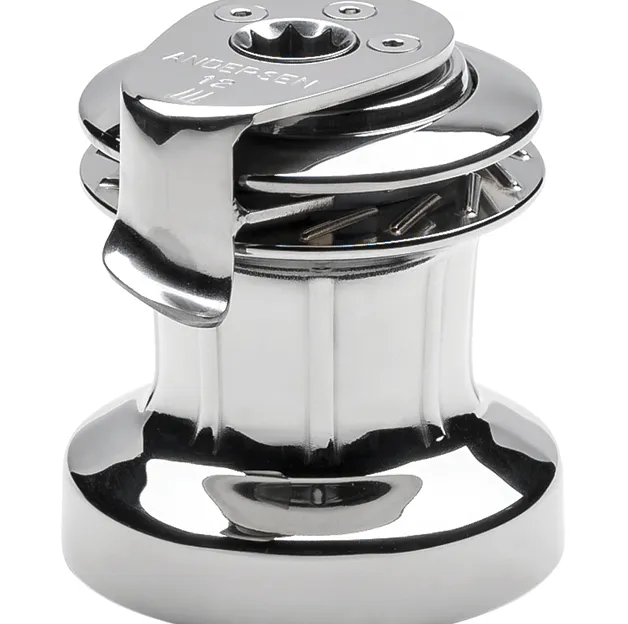
2. The raised ribs on an Andersen winch behave like small diameter low-friction rings, but without the risk of damaging the line. The thin points of contact increase friction without increasing heat to the point of being harmful.
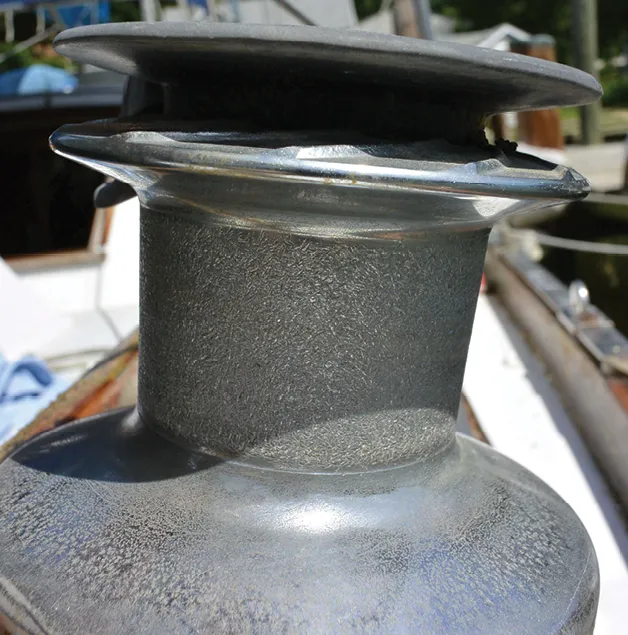
3. Even polished with age, the drum of an old Barient winch grips just fine with enough wraps.
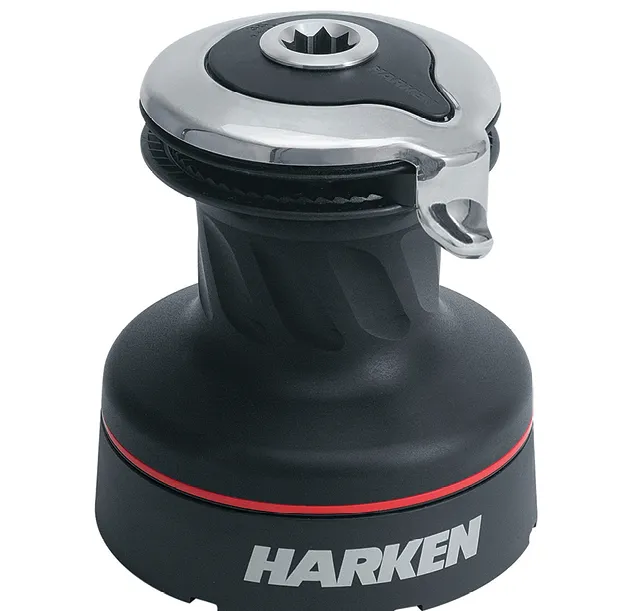
4. The grooves on this Harken self-tailing winch help push the line down toward the base of the winch, adding compression that can increase friction and improve its ability to prevent slipping.
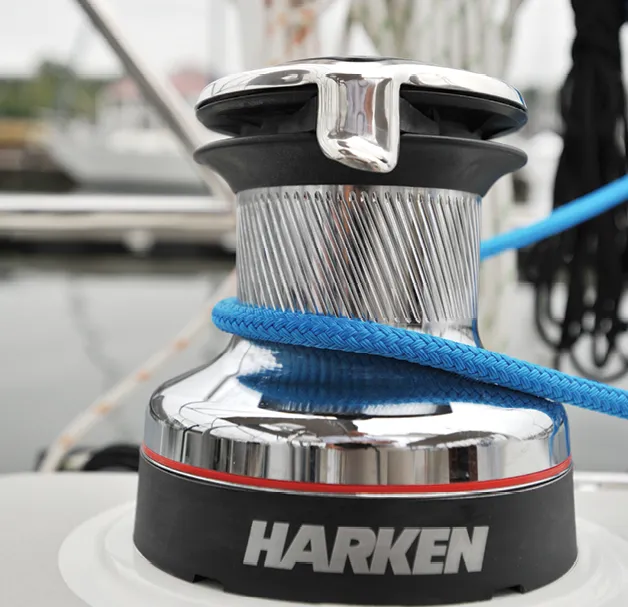
5. Harken’s shiny grooved surface helps to grip line without fraying it.
TECH GUIDE: FRICTION COEFFICIENTS FOR SELECT ROPES AND CAPSTAN MATERIALS
































